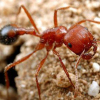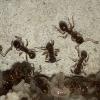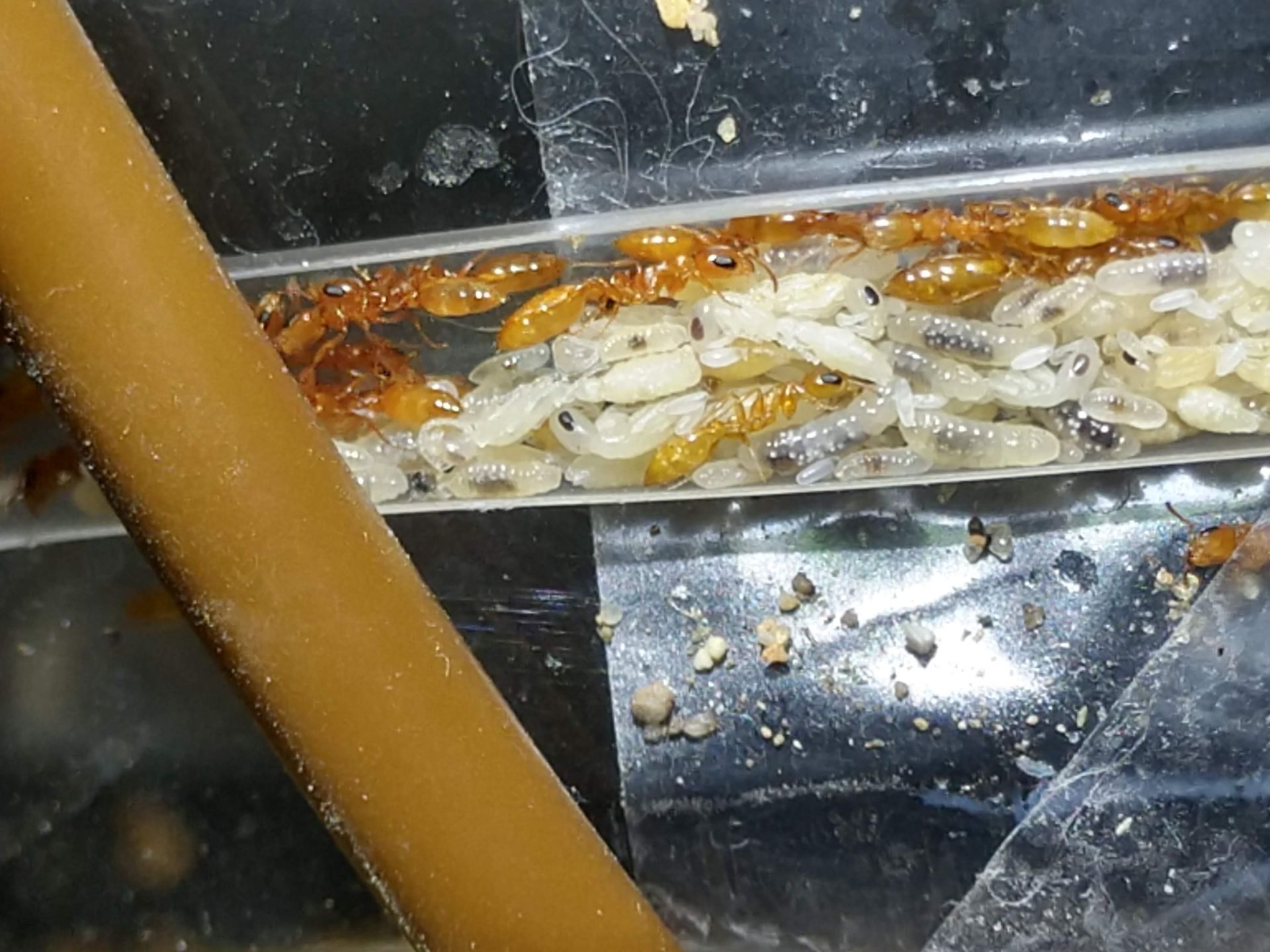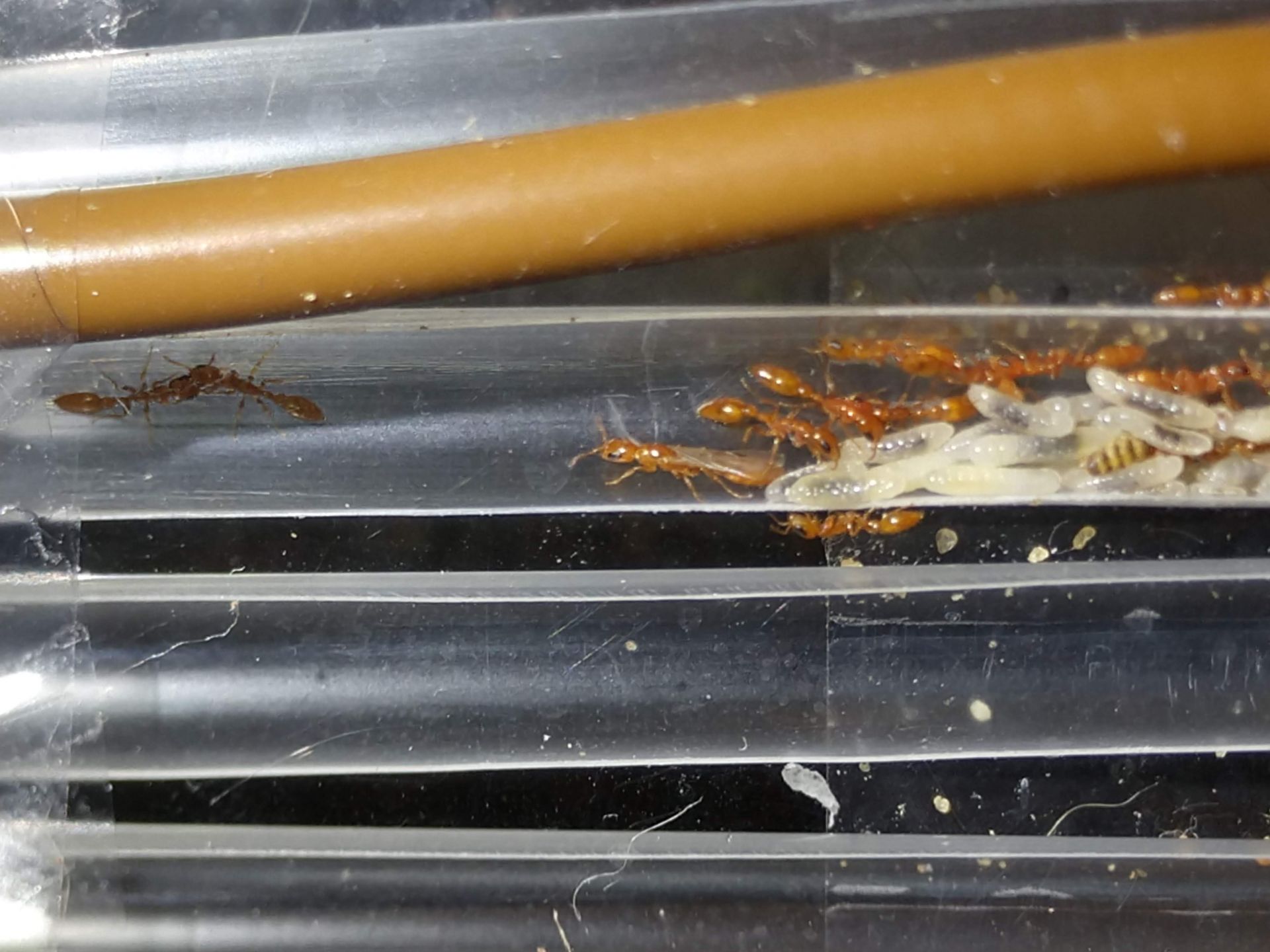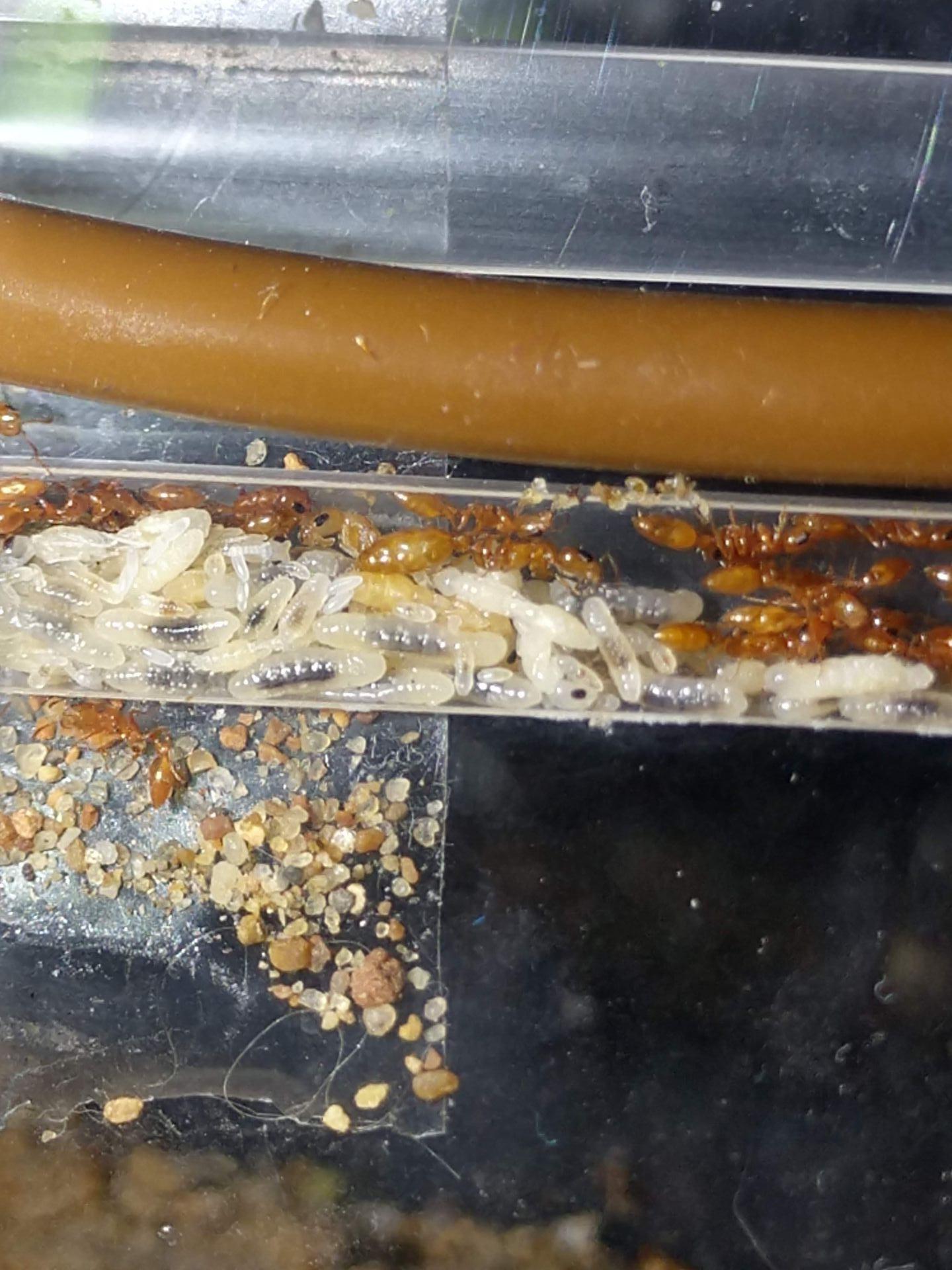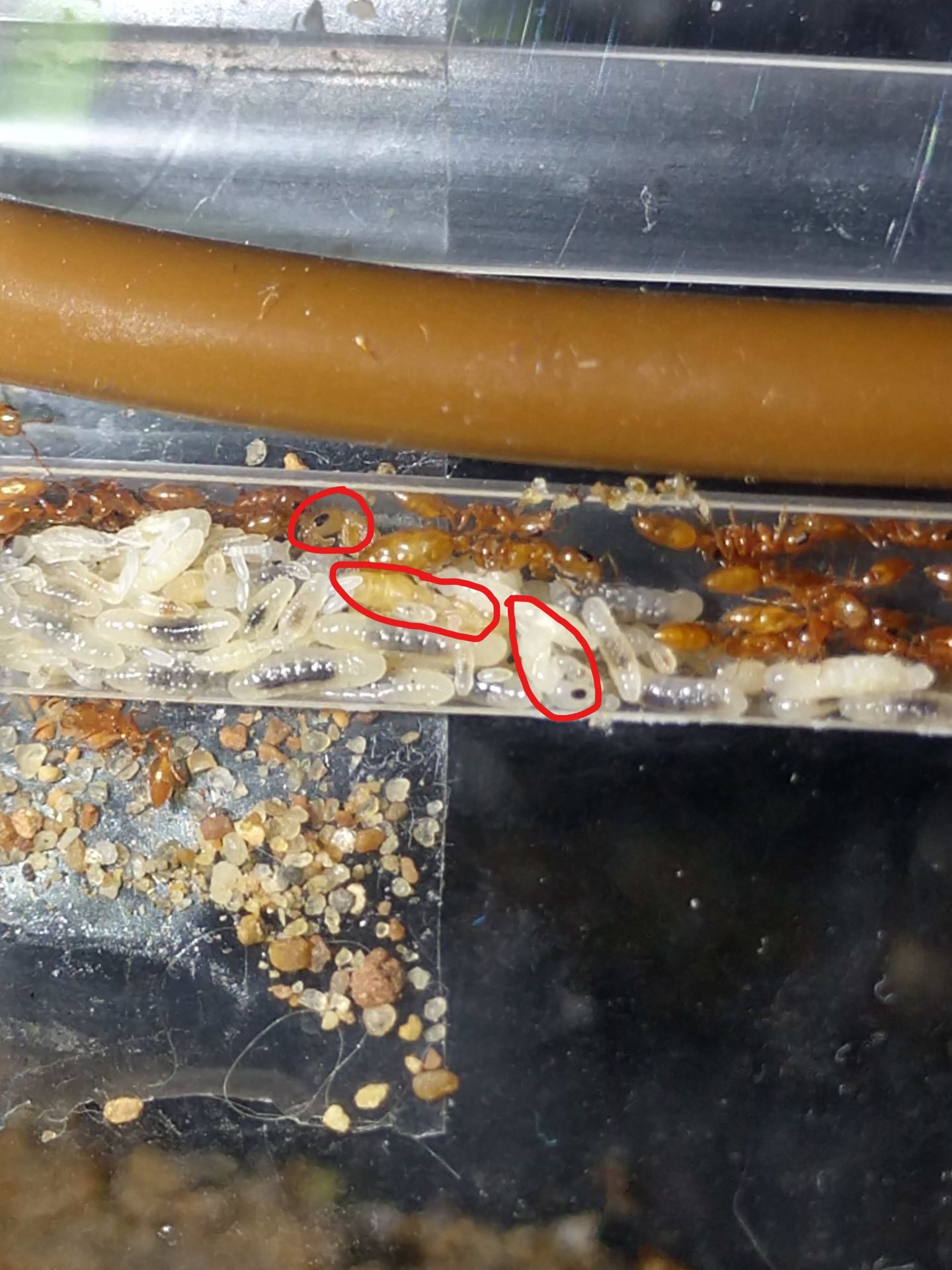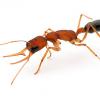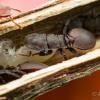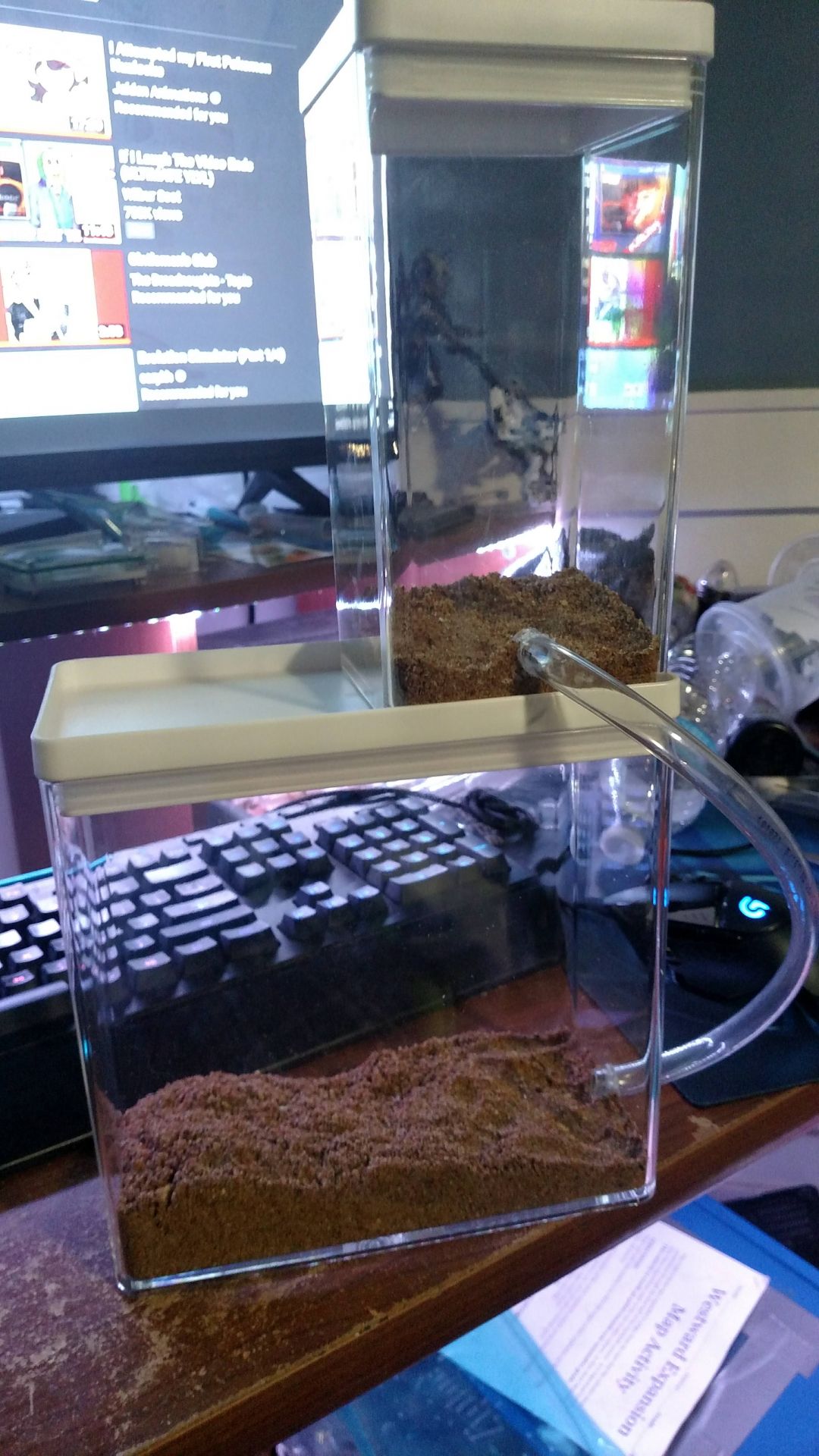
Next, I had to get the colony. I know of a massive colony of these gals with at least several dozen queens and several thousand workers. My goal was to get a few satellite nests for myself, so on November 24 I grabbed roughly a dozen small sticks with ants inside. I was hoping to find 2-5 queens.
After a few minutes, in the 2nd stick, the first queen arrived.
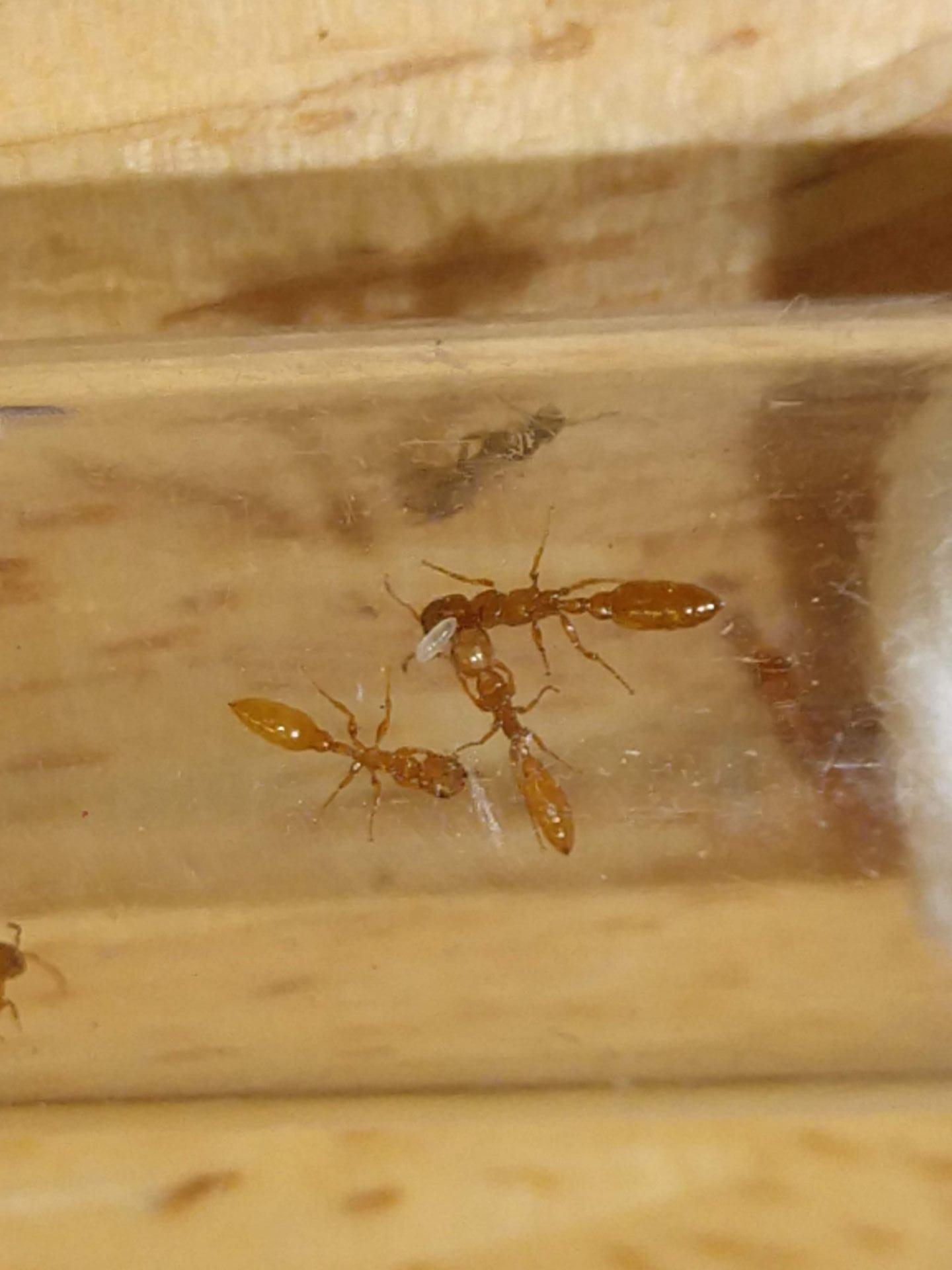
These gals take really good care of their queens, grooming them like crazy.
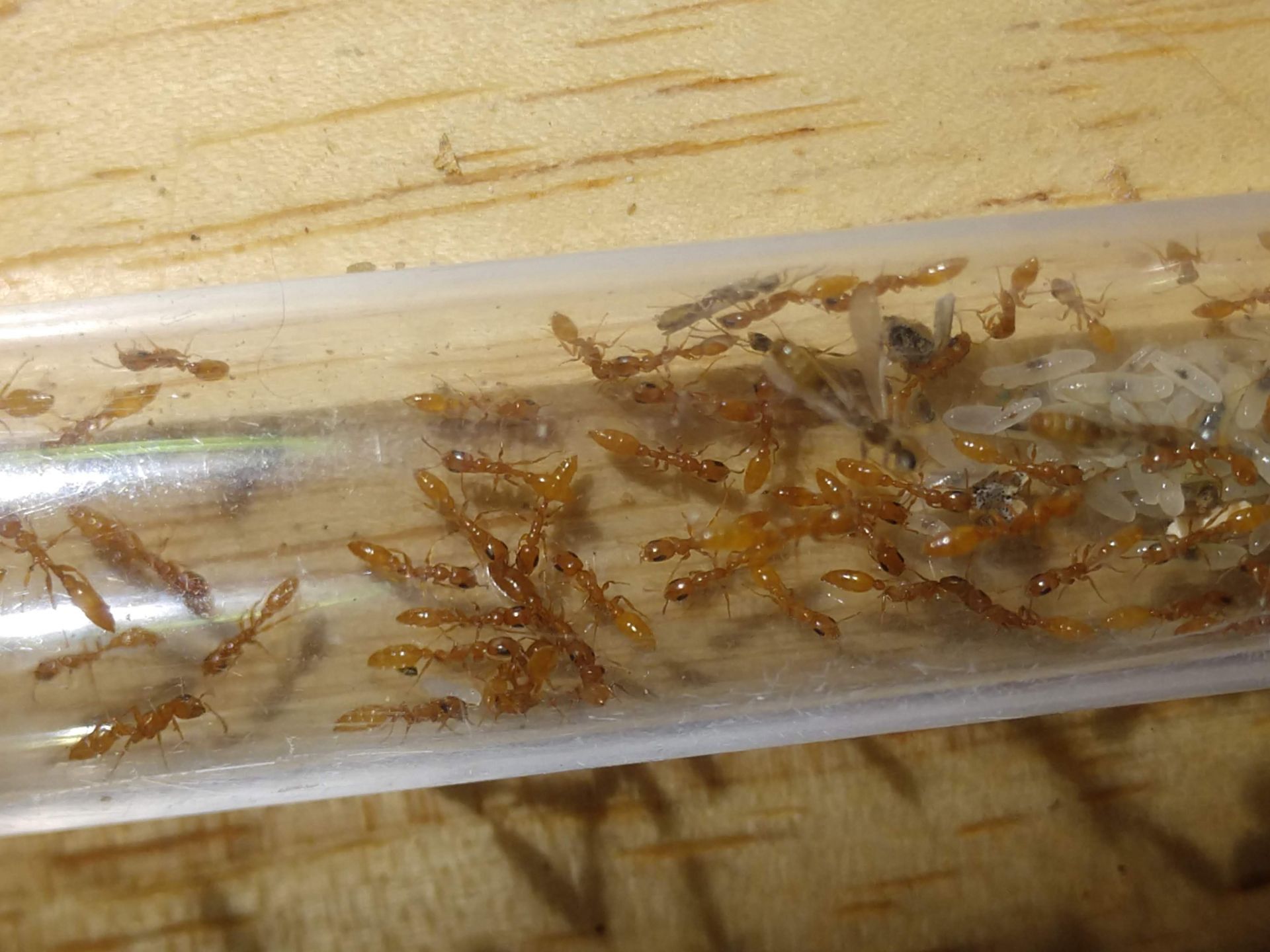
After tearing apart several more sticks with no luck, the very last had one more dealate queen.
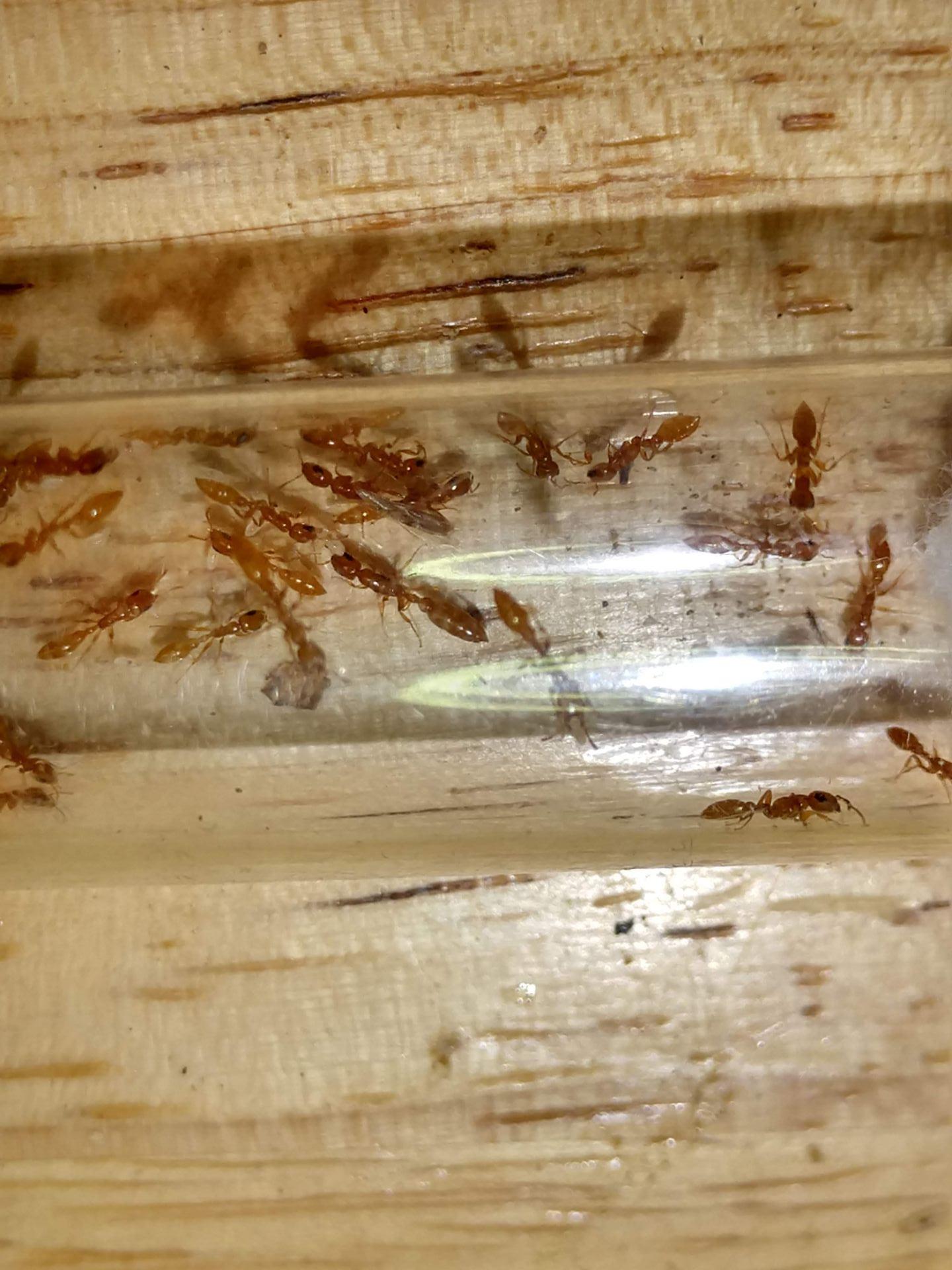
aaand, the whole colony. Roughly a few hundred workers, 2 dealate queens, 2 alate queens, and around 15 male alates. 90% of the brood is larvae, and the rest is eggs. Strangely, they have no pupae.
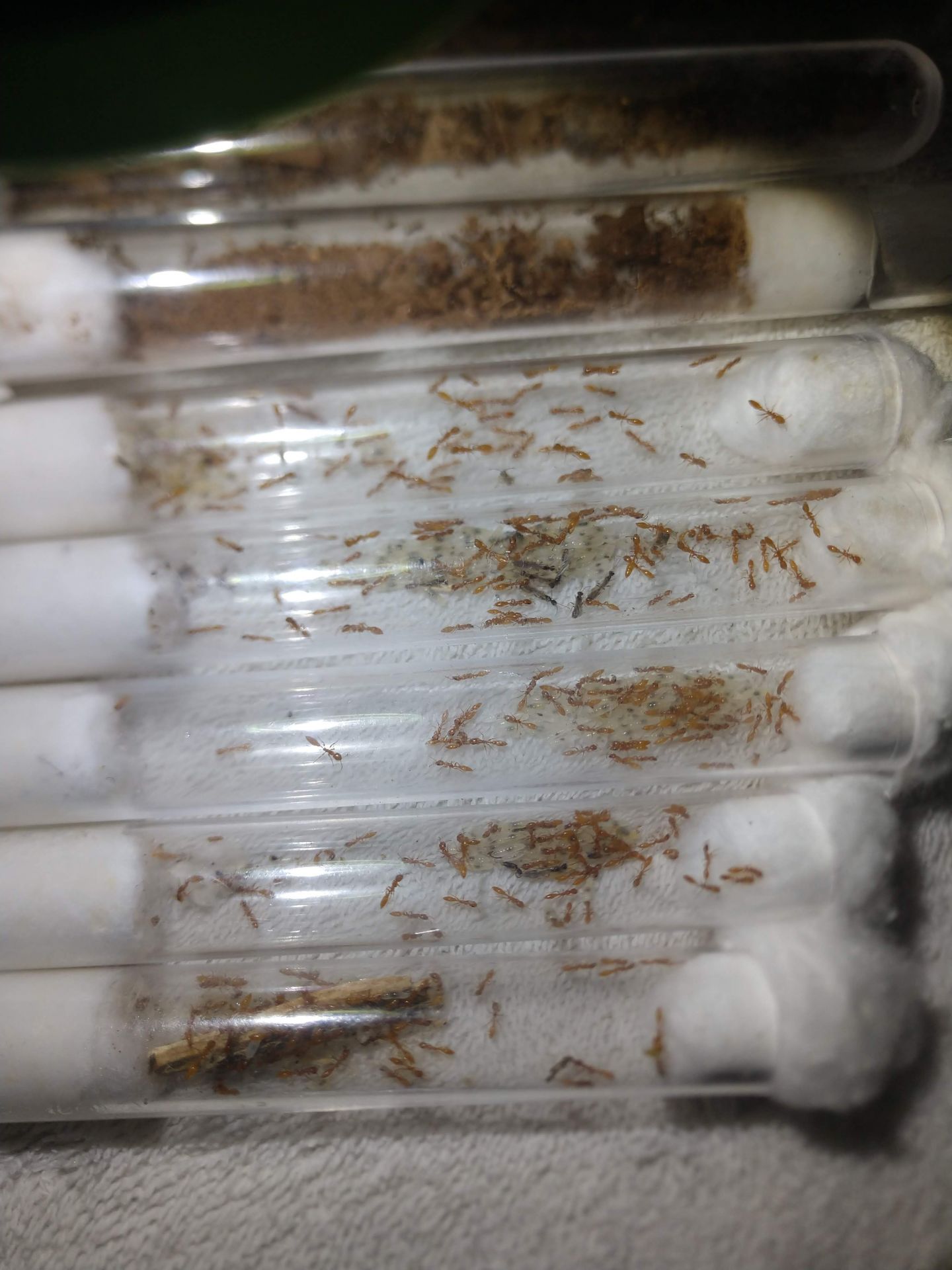
The colony eventually started to move into the nest on November 28. The actual nest is literally some plastic straws taped to the side of the container. It sounds absurd, but it works. These gals really like small, long spaces to nest in, and these straws provide exactly that. The humidity is provided via the substrate in the container, which actually works.
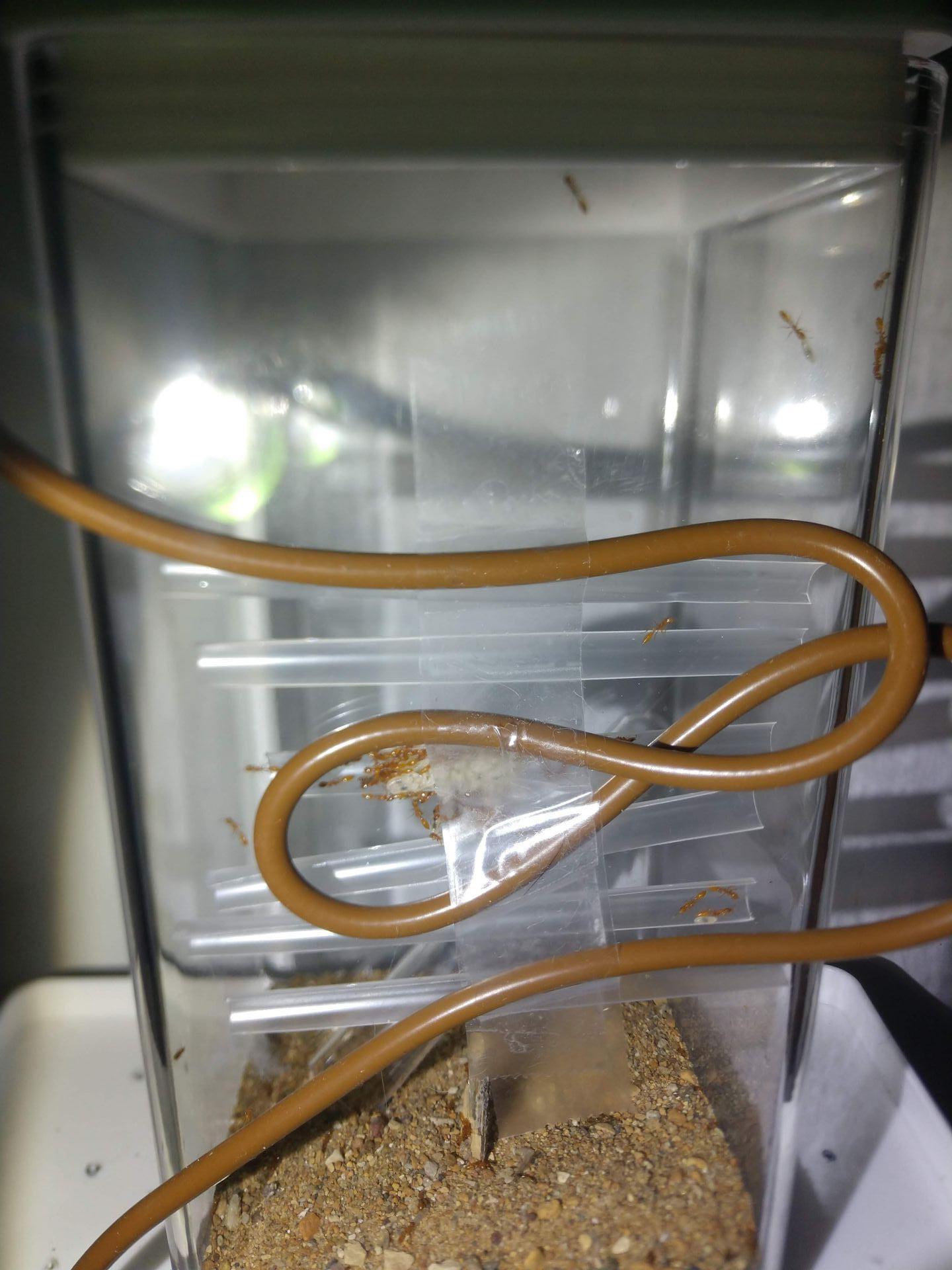
2 of the 5 tubes were placed into the small container.
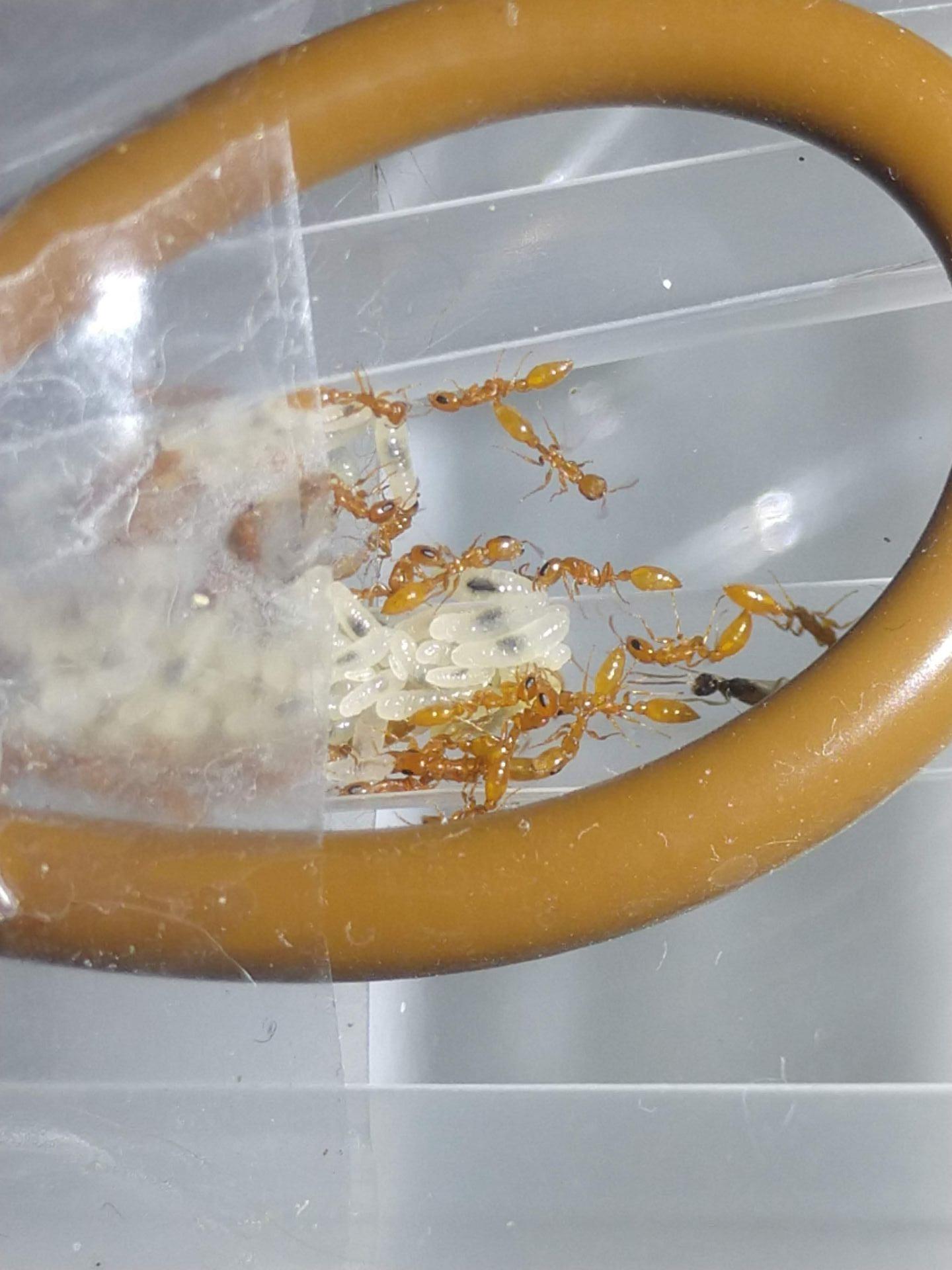
The remaining 3 tubes were placed into the large container. The heat cable enticed the colony to move right into the nest where I wanted them to be.
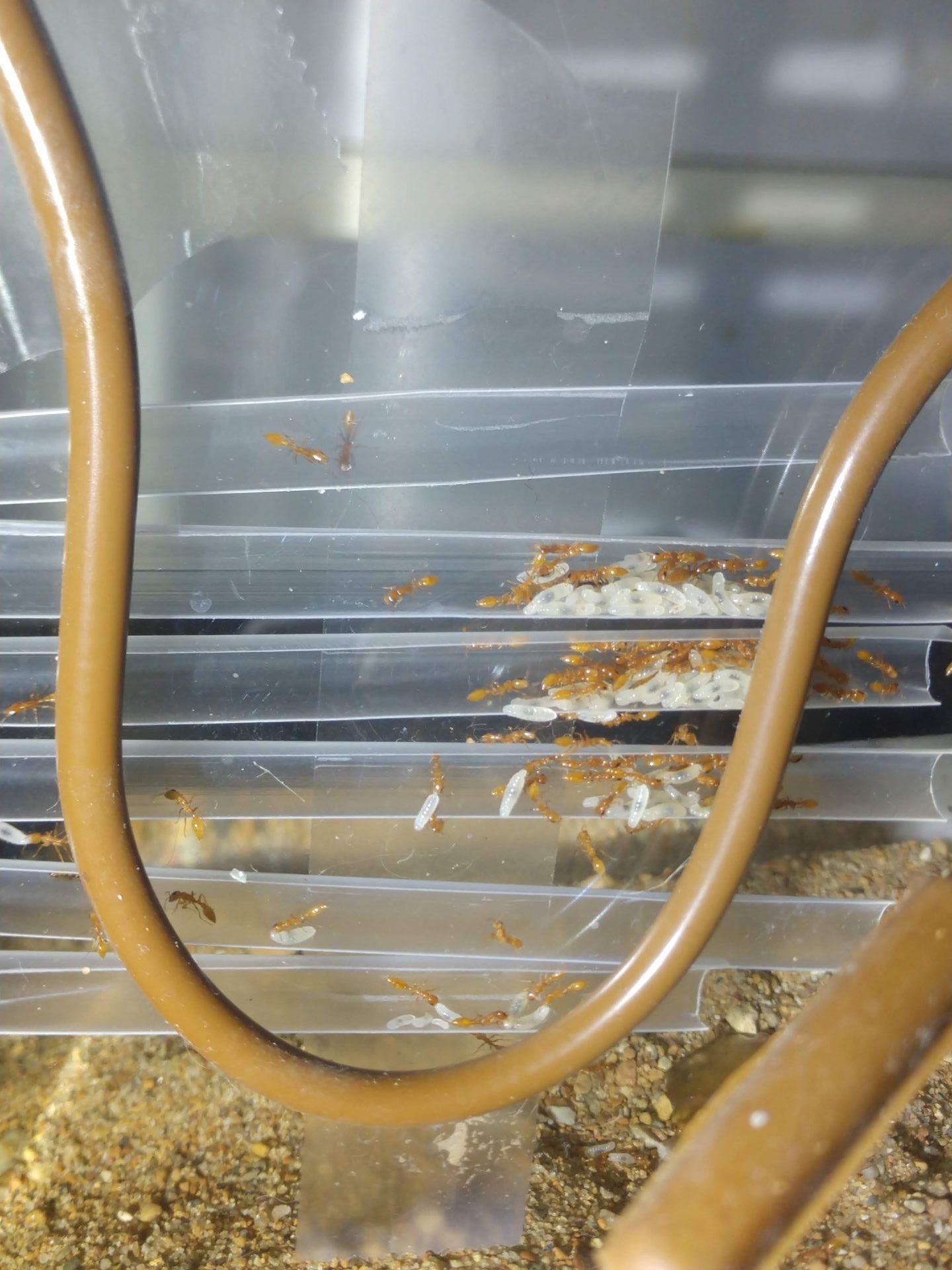
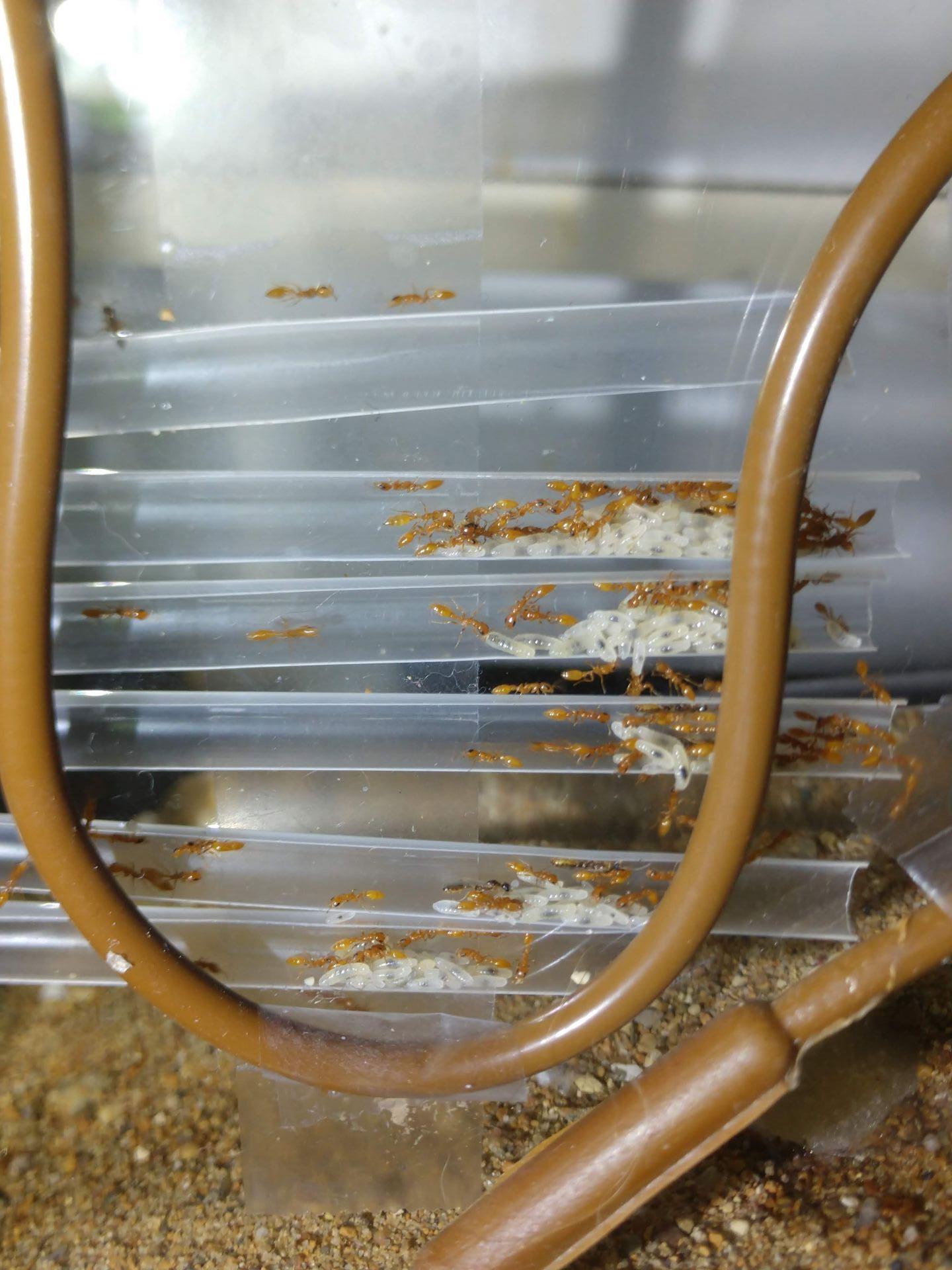
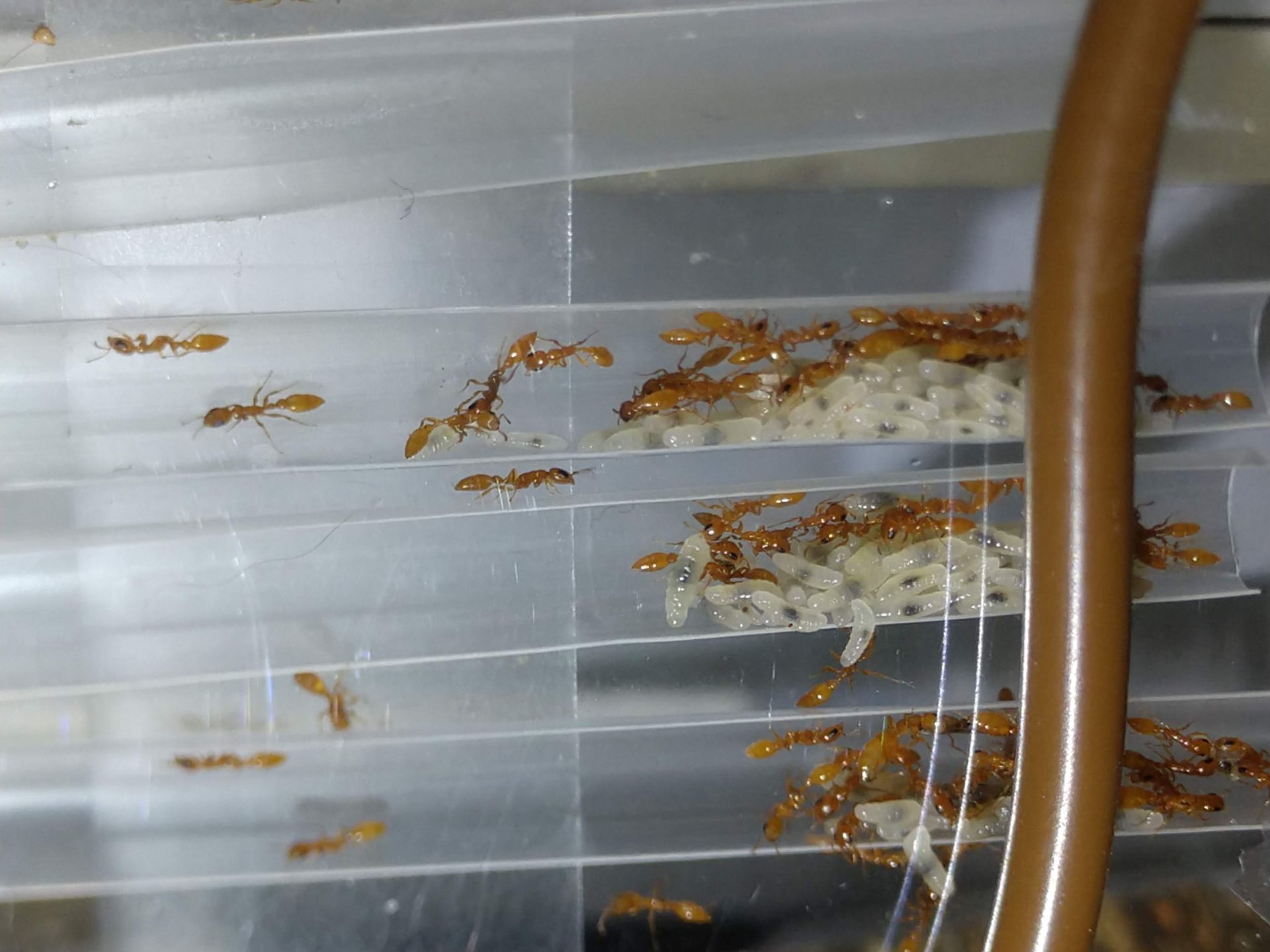
Both dealate queens were safe, and contrary to how they behave in the wild, the two nested together in the same chamber. Strangely, however, both alate queens just... disappeared. No idea whatever happened to them.

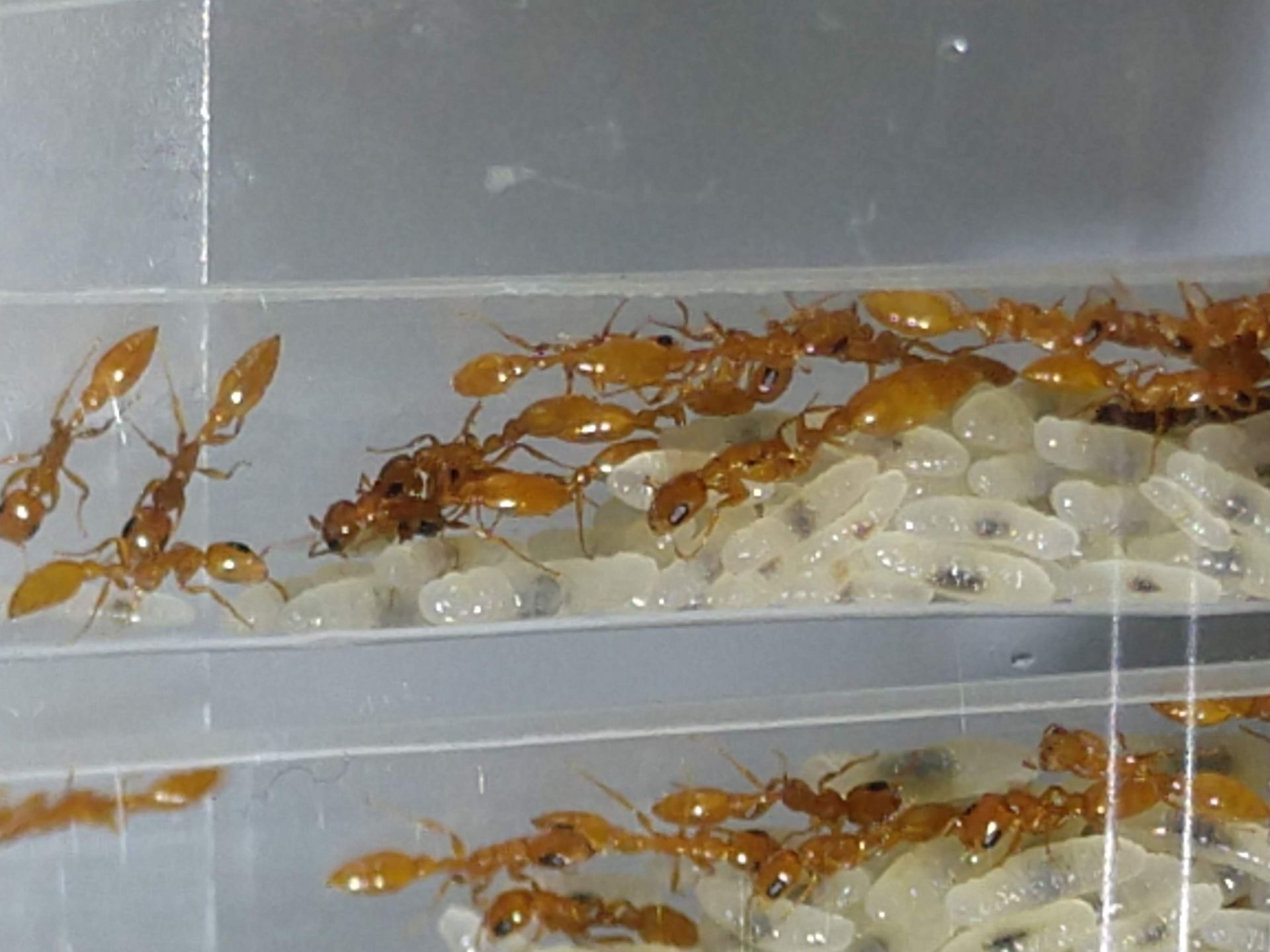
By November 30, the colony was fully settled in. Enjoying a diet of honey and mealworms, the queens began to lay.
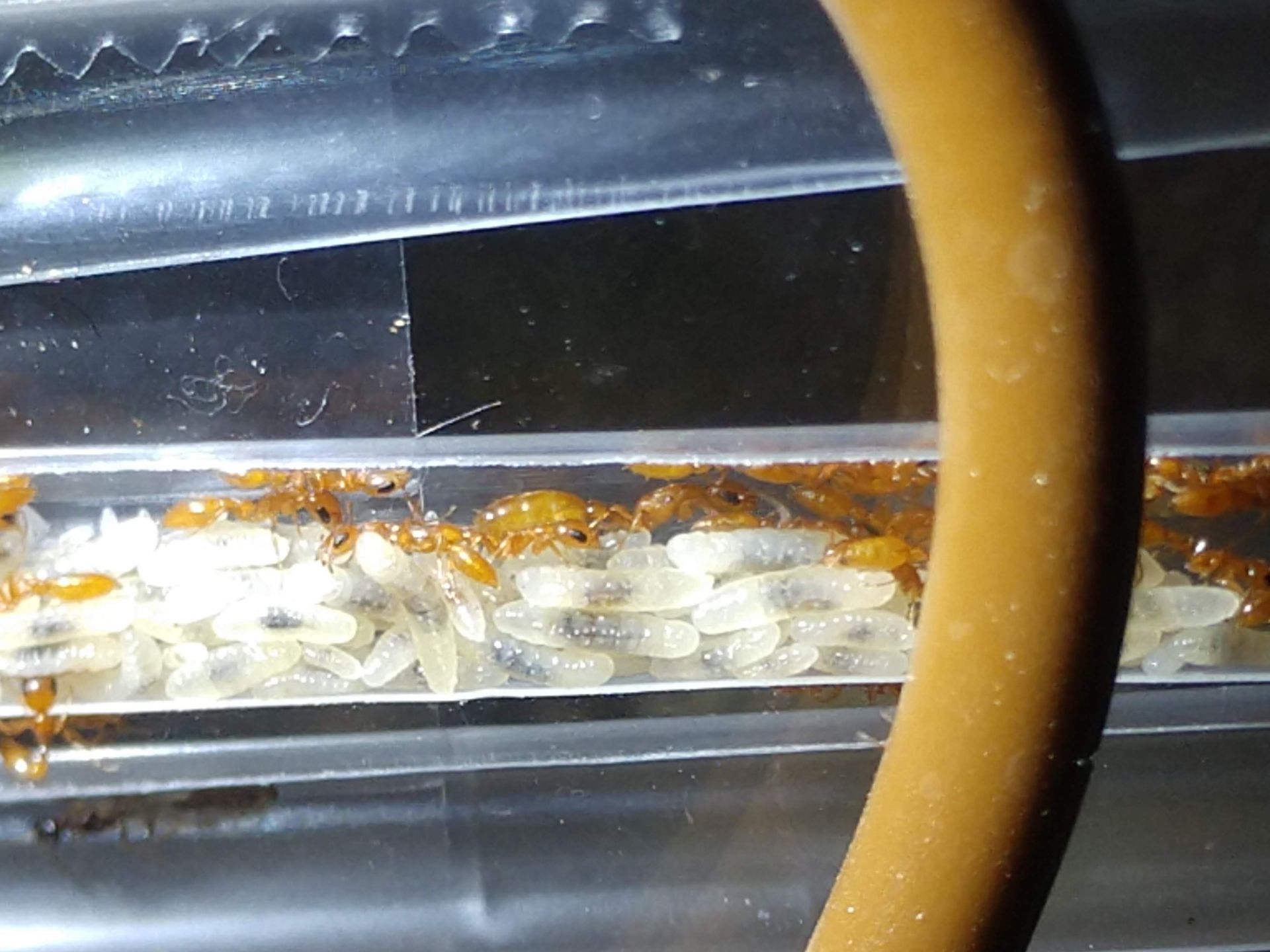
Nothing too interesting happened with these gals for a little bit. By December 10th one of the queens became considerably physogastric, meaning eggs were being laid like crazy by her. I can confirm that both queens were productive, however, as I had personally seen each lay an egg.
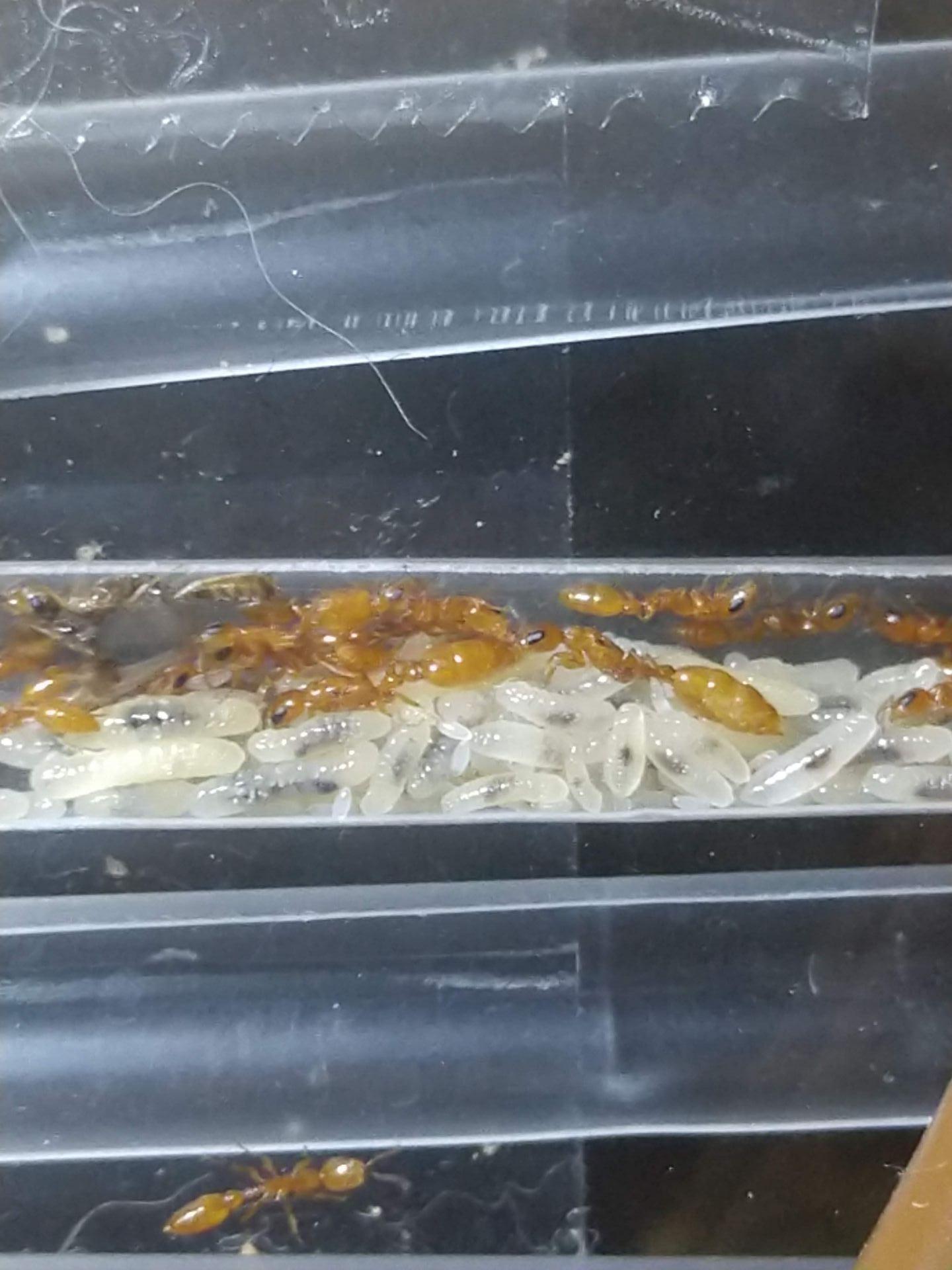
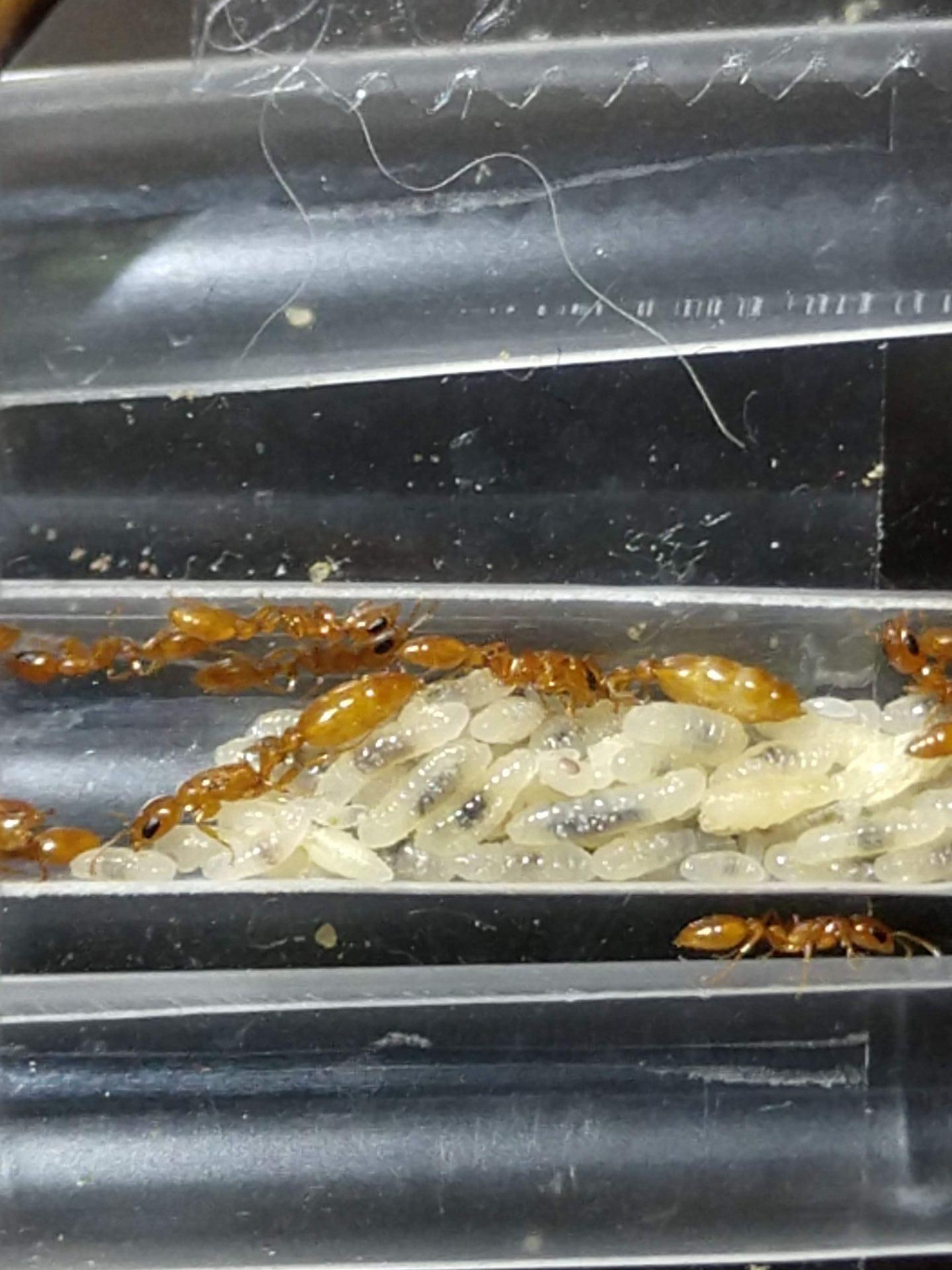
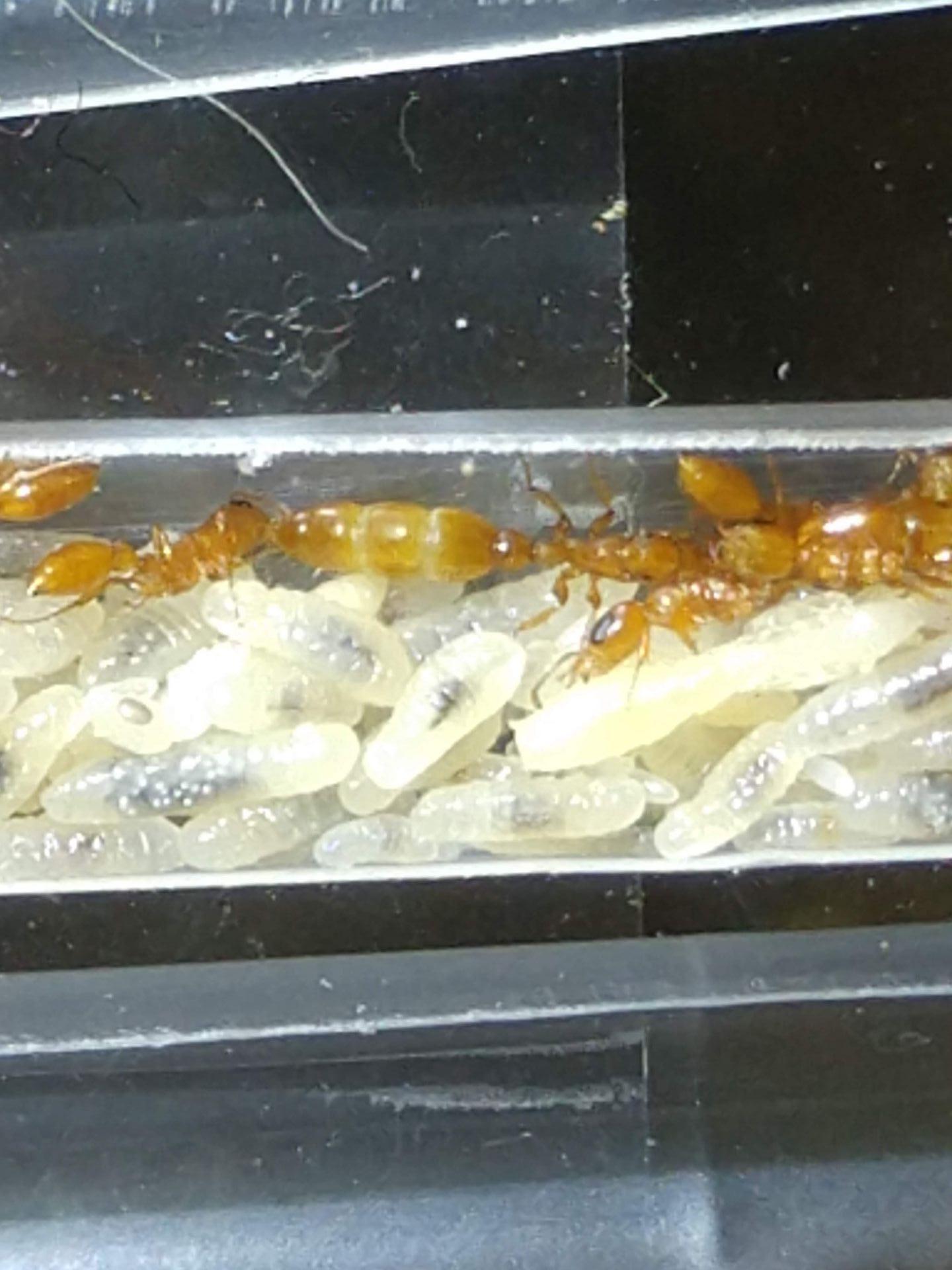
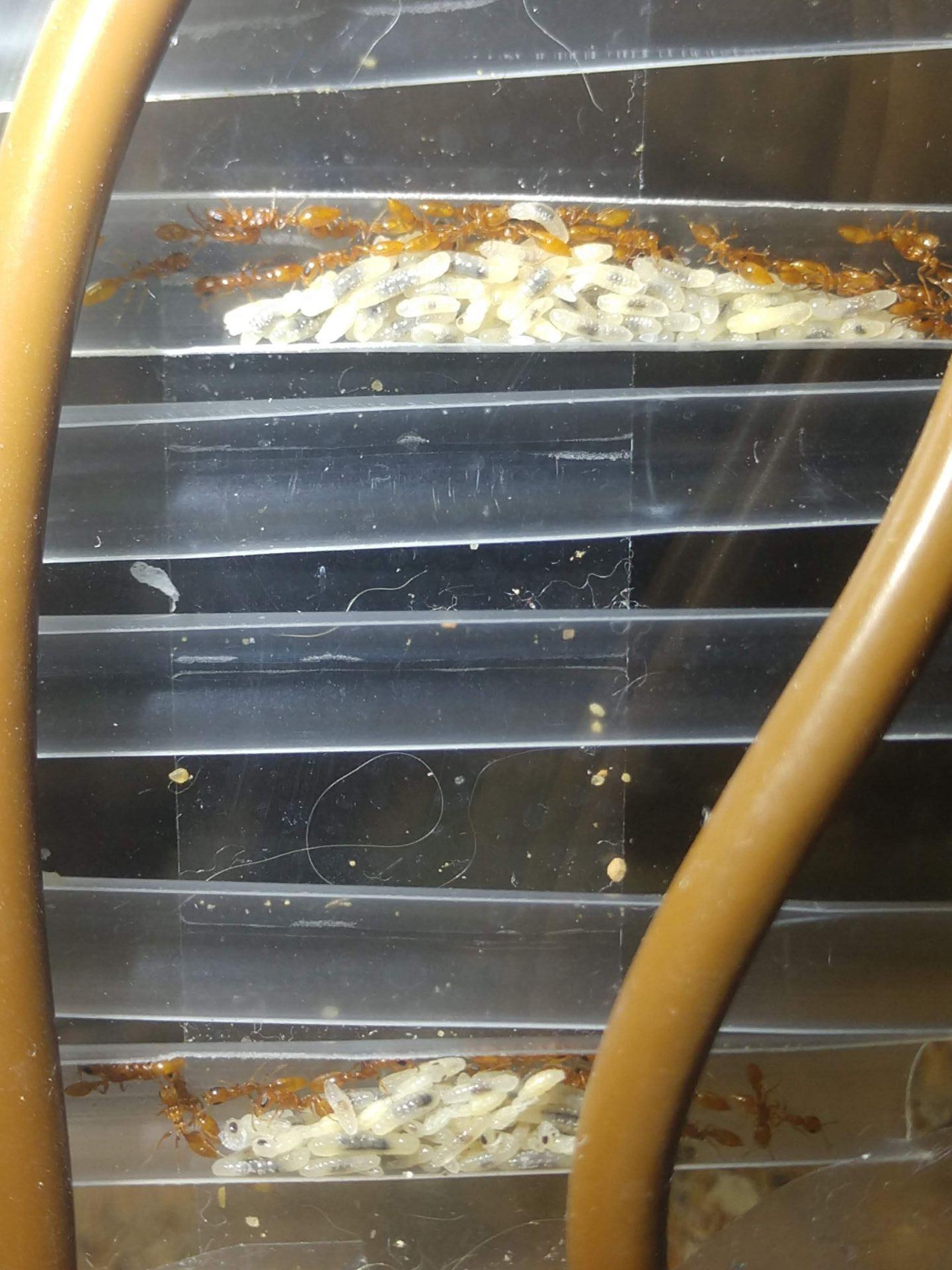
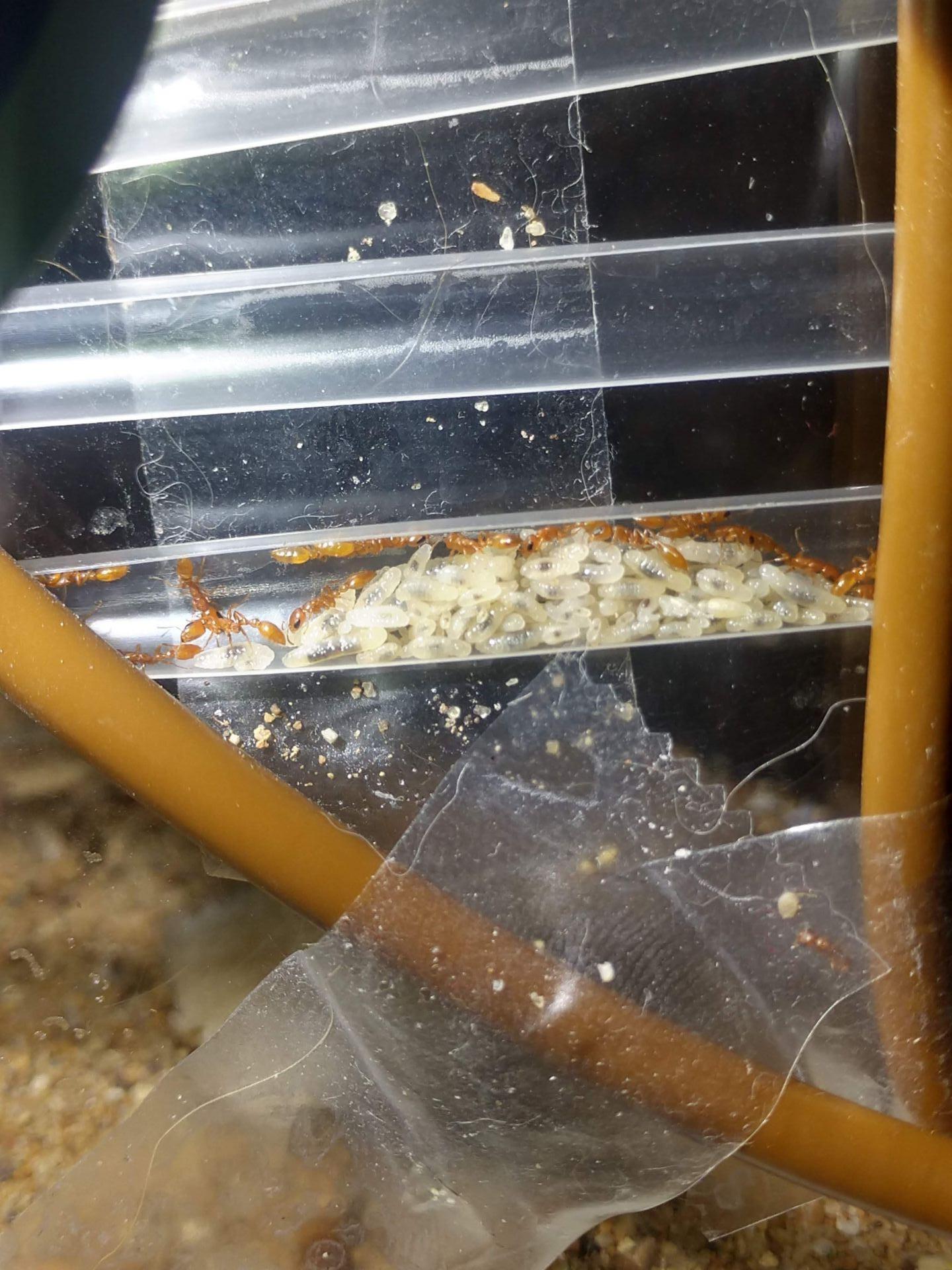
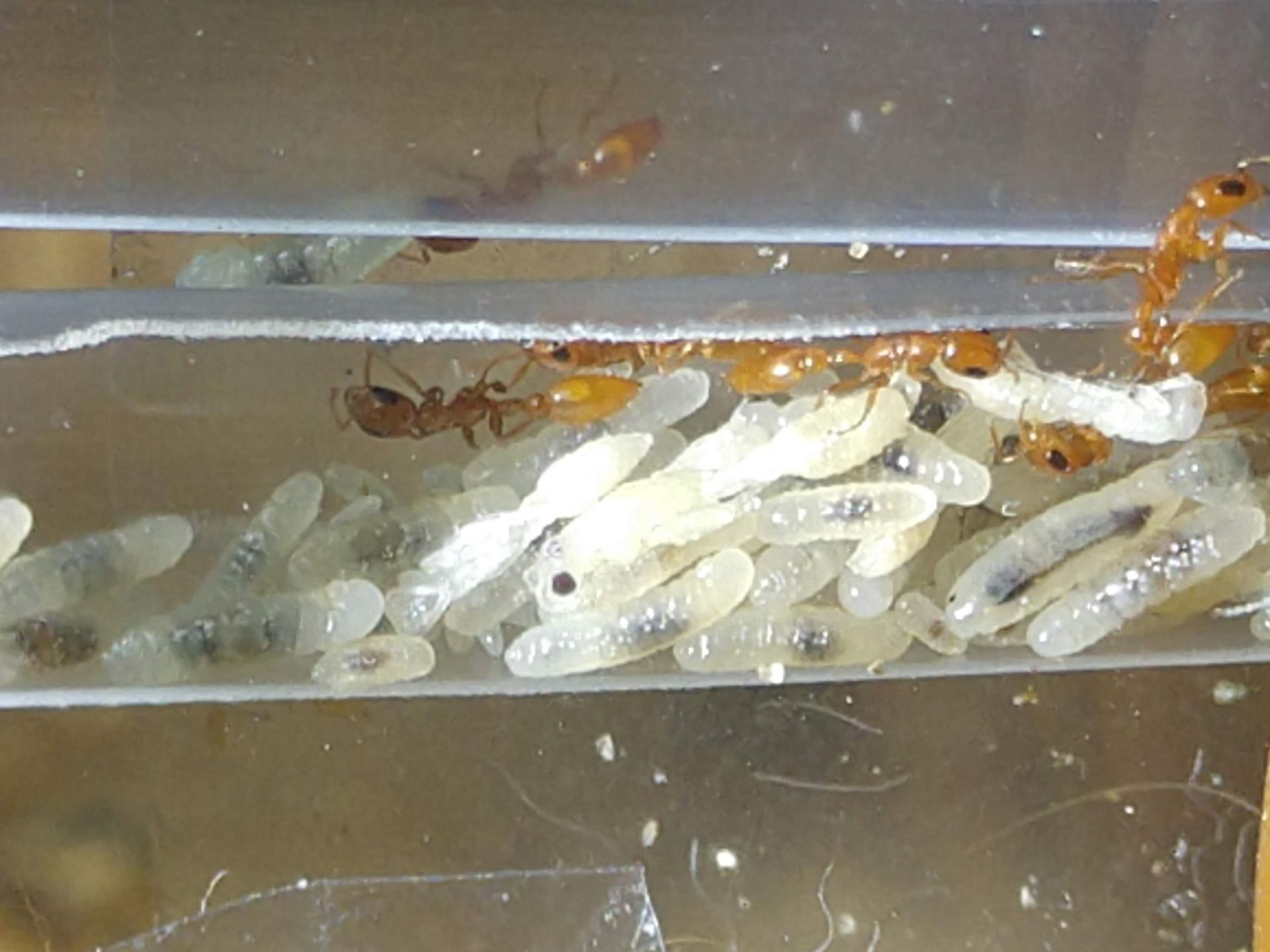
On December 15 and 16 I decided to make a couple videos of this colony. As you can see in the video I reduced the length of the vinyl tube connecting the two chambers as the workers weren't using it. Now that it has been shortened and the containers placed side by side, the workers move frequently between the two containers.
In this video you can see one of the queens has become even more physogastric than before, which is really cool to see.
Some pics of the physogastric queen
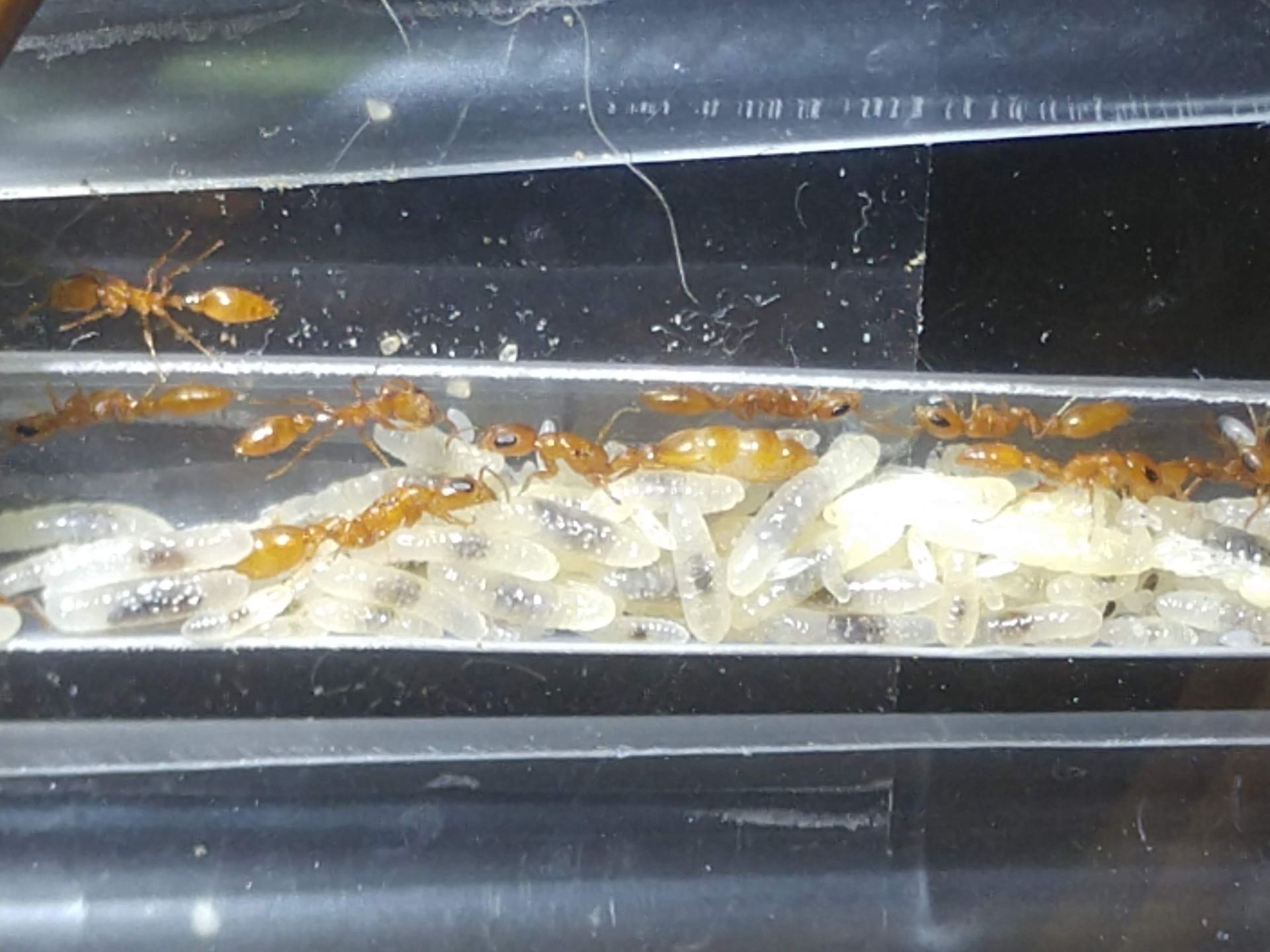
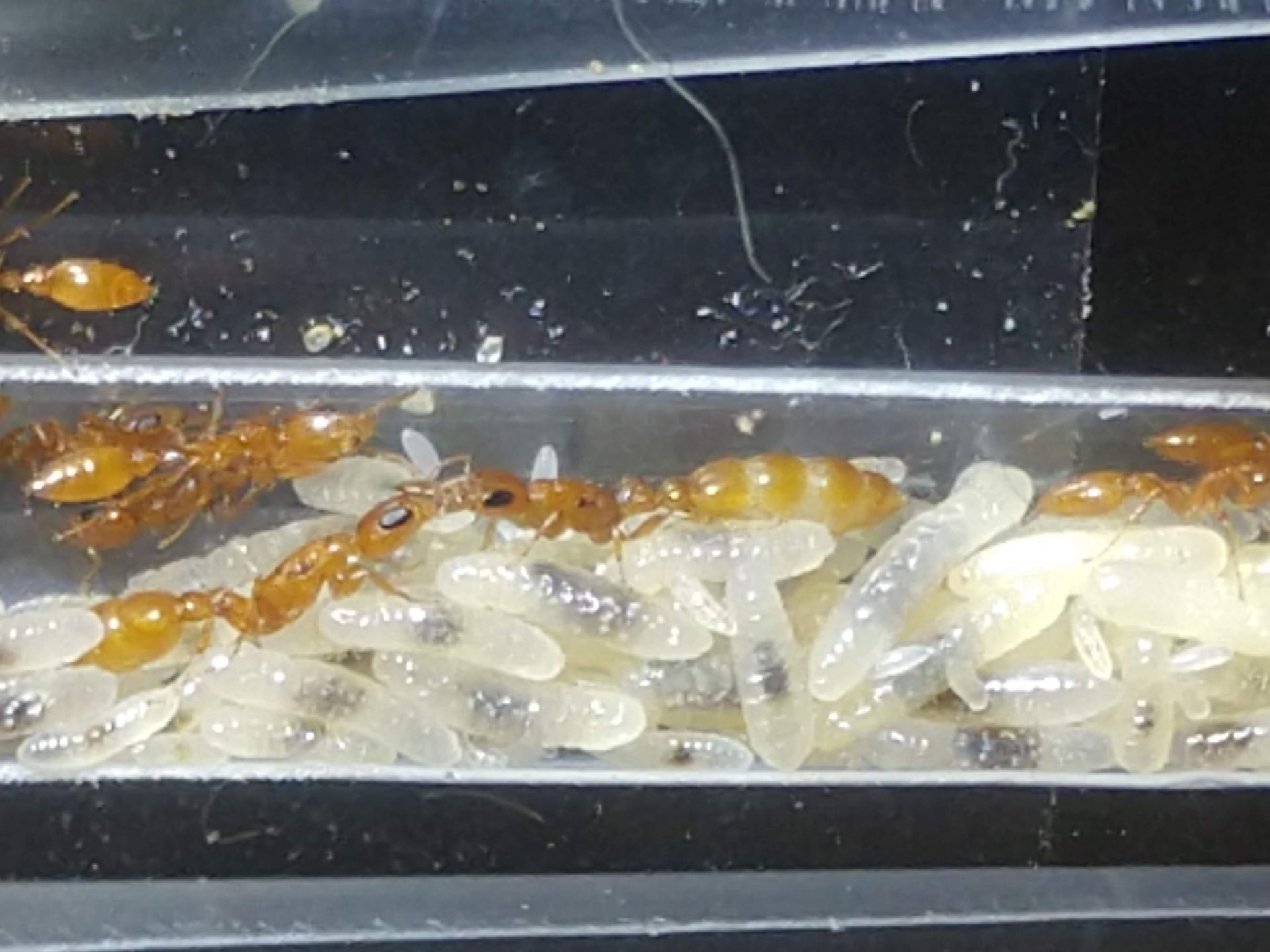
Sometime between then and the 20th, the two queens moved into the smaller container. Both queens moved into the one chamber, and the whole colony still only takes up 3 chambers total. The queen's chamber in the satellite container has been loaded up with brood from the other chambers and is absolutely stuffed to the brim.
During that time, on December 19th, the colony got its first new workers. At least 3 in one day. By now many of the eggs have hatched into larvae, and even more larvae have pupated. The colony is in full swing, and I can see them doing very well in the future. I will update whenever possible on their improvement.
By today, December 24, at least a dozen new workers have eclosed and 2 male alates have eclosed. The callows mature very quickly, their exoskeletons hardening in only 2 to 3 days.
Edited by CheetoLord02, March 21 2021 - 2:12 PM.




